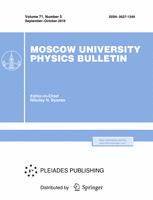The behavior of the lowest electron level of a hydrogen atom in a space bounded by a plane surface, on which the Robin boundary condition is imposed for the electron wave functions, is considered. We assume that the Robin condition parameter is a double periodic function, which seems to be reasonably in the case of adsorbents with periodic structure. It is shown that depending on the condition characteristics, two modes of adsorption of an atom on the sample surface are possible. In the first case, the effective atomic potential as a function of the distance between the nucleus and the boundary has a clearly expressed minimum at finite distances, which corresponds to the effect of the atom ``soaring'' above the plane. The second case occurs under the condition of a low initial concentration of hydrogen inside the sample and a large positive electron affinity of the sample surface. In such a situation, the minimum of the effective potential is located near the sample surface, and a significant amount of energy can be released during the adsorption process. The results were obtained using direct numerical calculations via the finite element method.
32.30.-r Atomic spectra
34.35.+a Interactions of atoms and molecules with surfaces
$^1$Lomonosov Moscow State University, Faculty of Physics



